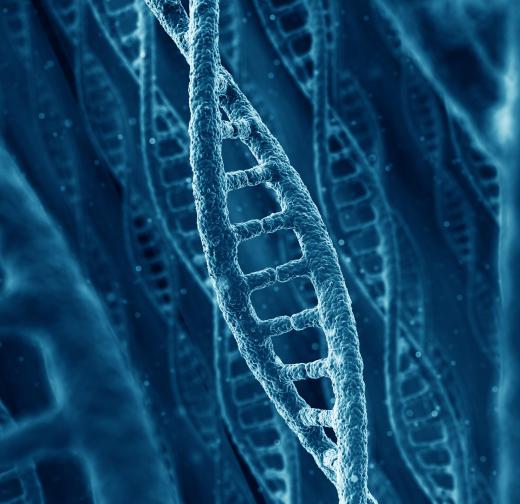Could It be Possible to Revive Extinct Species, As in Jurassic Park?
 Michael Anissimov
Michael Anissimov
The short answer: for insects, it's quite likely, for larger, older animals, it may be difficult. Scientists have successfully isolated DNA from a 120-135-million-year-old weevil found in Lebanese amber, amplified it using polymerase chain reaction (PCR), and sequenced it. Not its entire genetic code, but portions thereof. This genetic information has been compared with modern weevils for phylogenetic analysis. This is not the revival of extinct species, but it's a very important step in that direction.
There are a number of technical challenges in trying to revive extinct species, but none seem impossible to overcome. The hardest step is finding enough intact DNA. Because amber is organic and seals trapped insects in an airtight enclosure, the degradation of genetic material is quite slow. In typical fossils, little if any organic material remains, because the fossil is not the organic material itself, but inorganic silts that replace the organic material as it decays. Until as recently as 2005, it was thought that fossilization always replaced the original material, but discoveries of soft tissue of Tyrannosaurus Rex, including the detection of original collagen proteins, have upended this common wisdom.

Reviving extinct species would require finding large portions of the original genetic material. For Pleistocene species, such as mammoths, cave bears, dire wolves, and even Neanderthals, soft tissue is available, and some scientists have even made efforts at sequencing. This frequently requires multiple samples, as no individual sample is likely to contain the full sequence of uncontaminated DNA. In Jurassic Park, gaps in dinosaur DNA were replaced with segments of frog DNA, but this is problematic because it assumes that the scientists knew which dinosaur genes corresponded to which frog genes they were splicing in. As genetics advances, it will become easier to make these guesses, although substantial portions of the original genetic material is still likely to be required.

There is consensus among scientists that the revival of Pleistocene species, Neanderthals in particular, is completely feasible, and just a matter of time. If the full genome can be sequenced, it can be synthesized and injected into a fertilized egg cell on a related species (like birds), then grown in an artificial egg or womb. It was previously seen as a challenge to create a suitable artificial egg, but more recently scientists are developing an environment that should work to raise almost any embryo.

Before we see ancient species like dinosaurs revived, we are likely to see species from the Pleistocene. The possibility of reviving extinct species raises many ethical questions, but human curiosity is so great, it seems unlikely the technology will be held back for long if it is technologically feasible.
AS FEATURED ON:
AS FEATURED ON:













Discussion Comments
The animals that we sentence to extinction are often important in the ecosystem they lived in. These genetic advances will be able to save these species, and the flora and fauna that existed alongside them.
The dodo lived in almost perfect symbiosis with the plants it lived with. When the dodo went extinct, some plants that were dependent on the dodos for reproduction went extinct, too. We have some of the seeds of the extinct plants, and we could use the turkey to fertilize them at first, then bring back the dodo to keep them alive.
The mammoth went extinct and the grasslands were replaced by the moss and lichen, which were habitats not suitable for many forms of life. Resurrecting the mammoths would cause the grasslands to re-emerge, and the animals that co-existed with the mammoth can once again take their rightful place in the history of the planet.
I think we should find a way to revive animals, but not dinosaurs. They would kill everything and then when humans came again we would start over.
I really think this as possible, and that it would also be a great step for science. I only have one thing for the person that wants to revive extinct animals, please try it out on a species that might kill us!
@ Anon103816- I would have to agree with GiraffeEars on this one. I think that people need to learn to prevent problems rather than through immense resources at fixing problems and potentially creating more problems. The problem with innovation in many cases is that it focuses too heavily on short-term problem solving rather than long-term mitigation.
By cloning animals to replenish animals long extinct, scientists would essentially be taking a muti-billion dollar gamble that they can play creator better than nature. I think that any attempt to clone an animal to repopulate n ecosystem would be reckless and unethical.
@ anon103816- I don't think that guilt is a good reason to bring back extinct animals. The rate of extinction has increased because of people trying to control the environment. It is sad to see these species go extinct, but there are still big risks with gene splicing and genetic engineering of animals.
Numerous moral issues are debated about the cloning of animals. Additionally, a number of health issues arise in cloned animals. I was reading an article (TIME I think), that talked about the effects of animal cloning. Most of the animals that were cloned died prematurely from health complications resembling those of inbred animals. There are hundreds of thousands of years of genetic variability involved in the natural design of a species. Humans cannot replicate this genetic variability in a lab.
I believe its possible, if we find the closest related species to the animal you are trying to revive.
Splice the dna so that it will have some part of the genetic coding of the extinct species that they will share, and keep doing this until the species is/ or close to 100 percent of the species that you are trying to revive.
Let's say you are trying to revive the Yangtze River Dolphin (went extinct in 2006). It will be easier to revive and as we go down from the most recent to the oldest. This species is said to be extinct or missing, but, since it hasn't been a very long time, we could find most of the dna and start with the splicing. Please don't use this post on other sites. It took me a long time to write this and i want to see to it that this method of revival will be used to bring back species mankind has destroyed with our existence and we can bring them back.
If this works, we will let our guilt of killing off animals go to rest because we will be trying to bring them back. This age is full of advances and i hope we will be able to give the animals that died because of us another chance at life.
Post your comments